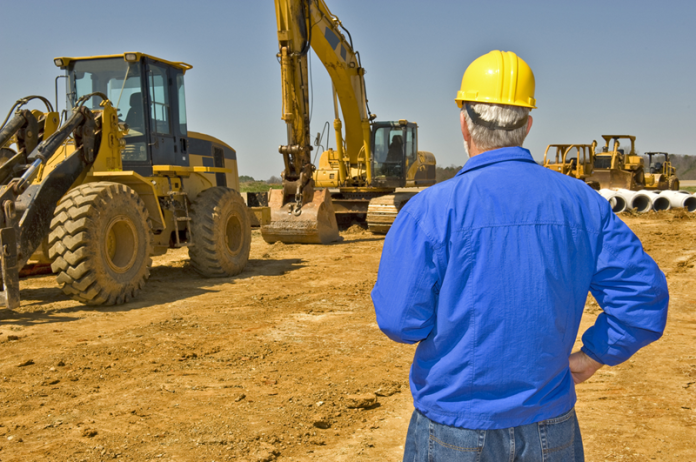Renting construction equipment is a cost-effective and flexible solution for contractors and businesses working on short-term projects or tackling specific tasks. However, to get the most out of your rental experience, it’s crucial to evaluate several factors before making a decision. Whether you need an excavator, skid steer, or another piece of machinery, understanding what to look for ensures you choose the right equipment, avoid delays, and stay within budget.
This guide highlights the key considerations when you rent construction equipment, helping you make an informed decision that supports project success.
- Define Your Project Needs
Before contacting a rental provider, take the time to assess the specific requirements of your project. Understanding what you need will help you select the right equipment and avoid unnecessary expenses.
Questions to Ask
- What tasks need to be completed? Excavation, grading, material handling, or demolition?
- What is the scope of the project? Large-scale operations may require heavy-duty machinery, while smaller tasks might only need compact equipment.
- What are the site conditions? Consider terrain, space limitations, and access points.
By identifying your project needs, you can focus on finding equipment that aligns with your goals and operational requirements.
- Choose the Right Type of Equipment
Different projects require specific types of machinery, and selecting the appropriate equipment is crucial for efficiency and safety.
Common Equipment Categories
- Excavators: Ideal for digging, trenching, and demolition tasks.
- Skid Steers: Versatile for material handling, grading, and light construction.
- Backhoes: Useful for projects requiring both digging and loading capabilities.
- Loaders: Designed for transporting and loading materials.
- Forklifts: Essential for lifting and moving heavy materials in warehouses or job sites.
Matching the equipment to your project’s specific needs ensures you can complete tasks effectively without overpaying for unnecessary features.
- Check Equipment Availability
Not all rental providers have the same inventory, so it’s important to confirm whether the equipment you need is available when you need it.
Tips for Securing Availability
- Book in Advance: High-demand equipment, such as excavators or skid steers, may require early reservations, especially during peak construction seasons.
- Confirm Accessories and Attachments: If your project requires specific attachments, such as buckets, augers, or breakers, ensure they are included in the rental agreement.
- Verify Backup Options: Ask the provider about replacement equipment in case of breakdowns or delays.
Ensuring equipment availability helps you avoid project delays and ensures a seamless rental experience.
- Inspect the Equipment’s Condition
The condition of the equipment you rent plays a major role in its reliability and safety during operation.
What to Check
- Visual Inspection: Look for signs of wear and tear, such as rust, cracks, or damaged components.
- Maintenance Records: Request documentation showing the equipment has been regularly serviced and is in good working condition.
- Operational Test: If possible, test the equipment to ensure all controls, hydraulics, and functions are operating correctly.
Renting well-maintained equipment minimizes the risk of breakdowns and ensures your project runs smoothly.
- Understand Rental Terms and Costs
Clear communication about rental terms and pricing is essential to avoid unexpected expenses or misunderstandings.
Key Points to Review
- Rental Period: Determine whether you need the equipment for a day, week, or month, and confirm the provider’s policies on extending the rental.
- Pricing Structure: Understand whether costs are based on time (daily, weekly) or usage (hours of operation).
- Delivery and Pickup Fees: Ask about transportation costs to and from your job site.
- Insurance Requirements: Verify whether you need to provide your own insurance or if the rental provider includes coverage.
Carefully reviewing the terms ensures you stay within budget while avoiding unexpected costs.
- Evaluate Provider Reputation and Support
The quality of your rental provider can greatly impact your experience. Partnering with a reputable company ensures you receive reliable equipment and responsive support.
How to Evaluate Providers
- Read Reviews: Look for customer feedback and testimonials to gauge the provider’s reliability and service quality.
- Ask for Recommendations: Consult industry peers or colleagues for trusted rental companies.
- Customer Support: Choose a provider with accessible support services in case of issues or questions during the rental period.
A reliable provider makes it easier to rent construction equipment with confidence.
- Consider Transport and Logistics
Transporting heavy machinery to and from your job site can be a logistical challenge, so it’s essential to plan ahead.
Transport Considerations
- Delivery Options: Many rental companies offer delivery and pickup services for an additional fee.
- Site Access: Ensure the equipment can be delivered and operated safely at your site, considering space and terrain limitations.
- Loading and Unloading: If you’re handling transport yourself, verify you have the necessary trailers and safety equipment.
Proper logistics planning ensures timely delivery and prevents unnecessary delays.
- Verify Safety Features and Training
Operating construction equipment comes with inherent risks, so safety should be a top priority when renting.
Safety Tips
- Inspect Safety Features: Confirm that equipment includes essential safety components, such as backup alarms, rollover protection, and lighting systems.
- Operator Training: Ensure your team has the necessary training and certifications to operate the equipment. Many rental providers offer training sessions or manuals.
- Emergency Procedures: Familiarize yourself with emergency protocols and ensure the provider offers support in case of equipment failure.
By prioritizing safety, you can reduce accidents and maintain a secure work environment.
- Plan for Fuel and Maintenance
Most rental agreements require renters to return equipment fully fueled and in good condition.
Maintenance Responsibilities
- Fuel Requirements: Verify the type of fuel the equipment uses and ensure you have an adequate supply on-site.
- Basic Maintenance: Check oil levels, tire pressure, and other routine items during the rental period to keep the equipment running efficiently.
- Damage Protocols: Understand your responsibilities in case of accidental damage or wear beyond normal use.
By staying proactive with maintenance, you can avoid penalties and ensure the equipment performs optimally.
- Confirm Insurance and Liability Coverage
Protecting yourself and your business from potential liabilities is essential when renting construction equipment.
Insurance Checklist
- Coverage Options: Confirm whether the rental provider includes insurance in the agreement or if you need to obtain separate coverage.
- Liability Limits: Understand the extent of coverage for accidents, theft, or damage.
- Certificate of Insurance: Provide documentation to the rental company if required.
Having adequate insurance in place provides peace of mind and financial protection during your project.
Final Thoughts
Renting construction equipment is a smart solution for businesses and contractors seeking flexibility, cost savings, and access to reliable machinery. However, to maximize the benefits, it’s important to carefully evaluate your options and prioritize factors like equipment condition, provider reputation, and rental terms.
When you rent construction equipment, take the time to assess your project needs, verify safety features, and plan for transport and maintenance. With proper preparation and attention to detail, you can ensure a seamless rental experience that supports the success of your construction projects.


